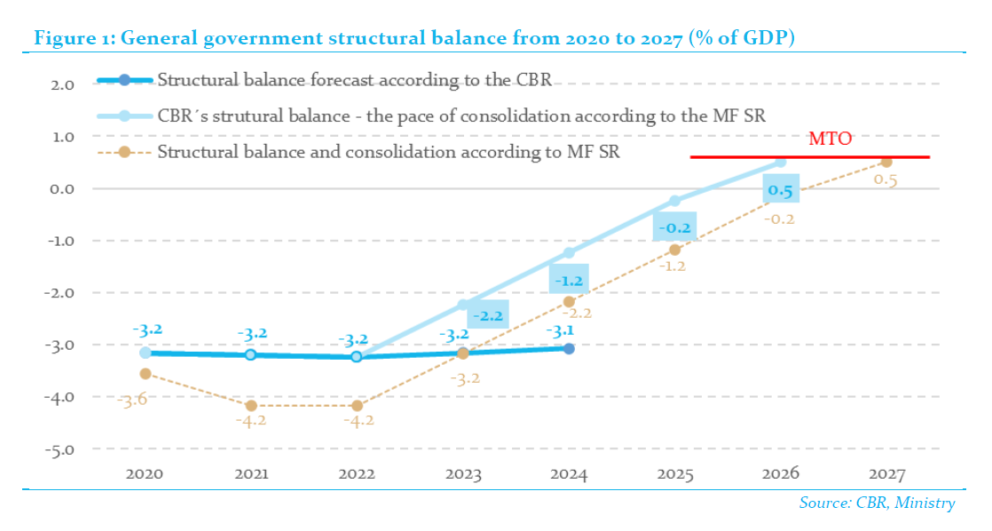The structural deficit of the general government in 2015 reached 2.7 % of GDP and increased for the second year in a row. Thus the medium-term objective of attaining a nearly balanced budget (structural deficit up to 0.5 % of GDP) was not achieved.

Evaluation of compliance with the balanced budget rule in 2015
- 1. 8. 2016


